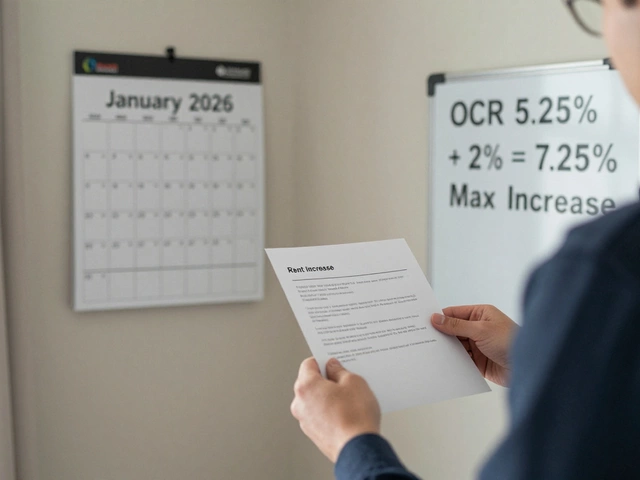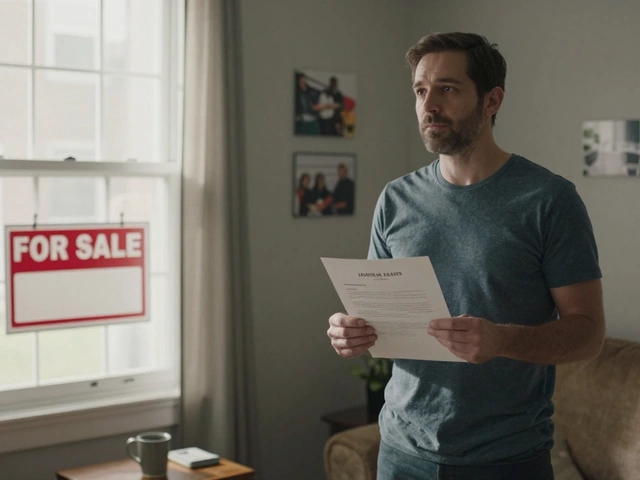Calculating Commercial Property Value Using Rental Income: A Practical Guide for Investors

Imagine you’re eyeing a promising block of offices on Auckland’s busy Queen Street, wondering if those listed rents really stack up to the asking price. Everyone knows income matters for property, but plenty of investors – even seasoned ones – keep stumbling over how to connect monthly rent to actual market value. The stakes? Get it wrong, and you could throw away six figures (easily). Get it right, and you break into the profit club. What’s wild is how it all seems simple on the surface: add up the rents, crunch a few numbers, and voilà, you know what it’s worth. If only it were that quick. In reality, every step has its own traps. Overestimate expenses and you’ll undervalue. Miss a market trend and you might overpay. And don’t even get me started on the whispers from other investors sharing off-the-books cap rates at the pub.
The Basics: Linking Rents to Value
At its core, the main theory underpinning commercial property valuation is this: the value of a building comes from the income it can reliably generate. This isn’t magic; it’s just the logic any business owner uses. If an office block pulls in $100K of rent after costs, buyers want to know how much they should shell out to collect that return. The gold standard tool here is the capitalization rate—also called the cap rate. Take the property’s net operating income (NOI)—which is all rent minus running costs—and divide it by the prevailing cap rate for similar buildings in your area. That spits out an estimated value that local banks, brokers, and big investors take seriously.
The trouble? No two buildings are twins, and cap rates drift based on risk, supply, and hype. A new high-rise with blue-chip tenants could sell at a 5% cap rate, but a tired retail strip might only win a 7.5% rate. Location plays an outsized role too: Auckland’s CBD, for example, often trades at tighter (lower) cap rates than rural commercial assets. Sentiment even matters. In mid-2025, with central banks hinting at future rate cuts, commercial cap rates have nudged down a bit—making every dollar of rental income worth slightly more on paper. It sounds nerdy, but keeping tabs on these subtle shifts can protect your wallet.
But don’t fall into the trap of staring at gross rent and calling it a day. Net operating income is where the magic (and the risk) sits. You start with all the rent the property brings in, then strip out things like property management fees, insurance, rates, repairs, and even a fudge factor for vacancy losses. In New Zealand, especially after the recent legal changes prioritizing tenant protection and healthy building standards (remember the 2023 law upgrades?), those costs matter more than ever. If you’re using other people’s numbers—like the ones a vendor supplies—read the fine print. You want to know what they’ve included or ignored.
Want a tip? Always compare at least three similar recent sales close by when deciding your cap rate. Don’t just trust the first value that comes out of the formula. The devil is in the details: vacant units, short leases, or rising maintenance bills will all warp your final result. Double-check, then triple-check, until you know your number feels right.
Digging Into the Formula: Crunching the Numbers That Matter
The formula most pros use is surprisingly straightforward, though the challenge comes from getting the inputs right. It goes:
- Property Value = Net Operating Income (NOI) ÷ Capitalization Rate (Cap Rate)
Let’s translate that with a local example. Suppose a small commercial warehouse just outside Auckland generates $140,000 in gross rent a year. After property management, council rates, insurance, maintenance, and a realistic allowance for vacancies (say, 5%), the actual net operating income is $100,000. If comparable properties are selling at a cap rate of 6.5%, then:
Value = $100,000 ÷ 0.065 = $1,538,461
Sounds crisp, right? But here comes the tricky bit: getting the cap rate right. Cap rates swing with economic tides and investor moods, so you’ll want up-to-date sales data (from your preferred valuer, bank, or online trackers—never just sales brochures). Ignore cap rates that seem suspiciously low unless you can confirm the leases are bulletproof and tenants aren’t about to jump ship.
Then there’s NOI. Double-check every line item: Are outgoing costs capturing hidden nasties, like that ageing HVAC system or rising insurance post the last weather event? Banks do their own due diligence and could knock down your NOI if you look overly “optimistic.” Pro tip: Call at least two local leasing managers for a second opinion on market rent if you’re buying a half-empty building. Real rents beat glossy promises every time.
And if you’re looking at multi-tenant properties, beware of blending rental rates too loosely. A building with one café on a five-year lease and three small offices on short-term rolling rents needs a weighted average lease calculation to assign future cash flow risk. You don’t want your value propped up by a tenant who’s packing up next month.
On the flipside, some savvy owners successfully “add value” by improving tenant quality or refurbishing tired spaces, letting them hike up rents and, as a result, dramatically increase overall sale value—sometimes by 20% or more in under two years. If you spot untapped renovation potential, include conservative rent uplifts in your calculations, but stress-test your numbers against what local leasing agents say is achievable.

Beyond the Formula: Local Tricks, Trends, and Red Flags
Here in Auckland, and across New Zealand, the property market has its own rhythms. For instance, earthquake-prone buildings in Wellington often trade at discounts even when rents look stellar—buyers price in the risk (and cost) of future upgrades. That means cap rates—especially in tricky localities—aren’t just numbers from a spreadsheet but signals of how buyers view risk, demand, and future headaches.
The last couple of years showed how much tenants matter. Short, rolling leases or declining industries (think: failing retail chains) drag cap rates up, eating into property value. Meanwhile, medical centres, logistics, and well-placed suburban offices have bucked the trend thanks to sticky tenants. If you’re calculating property value on income, always adjust for lease length and tenant quality. If a major tenant can walk in four months, that’s a softer income stream, and buyers will want a discount.
Smart investors look one step ahead: is the local council planning to upzone the area for high-density development? Has a major new rail link been funded? These events can push rents—and therefore feasible property values—skyward. On the other side, fresh competition or regulatory change (like stricter green building standards) can push values down if the building can’t adapt cheaply.
- Check for “phantom income” like rent-free periods or incentive payments—these can artificially pump up reported rental figures.
- Always project future rents realistically; don’t just go off last year’s numbers if the market is cooling or new supply is due.
- If you can, get your hands on the building’s full rent roll, including every side agreement and outgoings schedule. Surprises lurk in the fine print.
- Watch for properties with one major tenant accounting for most of the income. If they leave, you’re exposed.
- Factor in the “yield gap” if using borrowed funds: interest rates have eaten lots of profit for rookie investors who ignored the maths when rates rose suddenly in 2022 and 2023.
Nothing beats a full building inspection—spend the time walking through, meeting existing tenants, and treating dusty accounts and maintenance reports like a goldmine of clues. The more you see and verify, the less likely you’ll overpay on faith.
Tips for Smarter Calculations and Better Deals
The difference between a great property deal and one you regret is usually found in the details people overlook. So here’s how to stack the odds in your favour:
- Get hyper-local. Cap rates vary by suburb, building type, and even street. Get real sales data for at least three comparable properties nearby, not just a citywide average.
- Be absolutely ruthless with your NOI calculation. Include realistic vacancies, all outgoings, and future expense forecasts. If it looks too rosy, the other side probably left something out.
- If finance is part of your plan, stress-test your numbers at higher interest rates. Lenders aren’t sentimental, and a tighter yield can turn cash flow from positive to negative fast if rates jump.
- Check in with multiple local agents to verify market rents—and visit the property at different times to see who’s actually paying and who’s just listed. A full building is meaningless if half the tenants are late on their rent.
- Think about future-proofing: will the property need expensive upgrades to comply with new health, safety, or energy standards? If so, mentally deduct this cost from your value calculation—just because the rents are good now doesn’t mean they’ll last forever at those levels.
- Don’t get tripped up by the numbers alone: talk to current tenants if you’re allowed, check local council files for coming developments or restrictions, and be on the lookout for competing buildings coming onstream soon. A sudden glut can crash rents.
- And remember: the best deals are made before you sign. If your calculation shows the numbers are only just holding together, walk away or negotiate harder. There’s always another deal waiting if you’re patient and diligent.
Picking apart Auckland’s commercial property market—or any market, really—comes down to clear-eyed, street-smart maths matched by solid local knowledge. Crunch the rental income numbers with care, adjust for every risk, and stay alert to shifting cap rates. That way, you don’t get left holding a building that looked beautiful on paper but just can’t pay its own way in real life.



